The Data
As all the testing in this round-up was performed with the exact same equipment, using the exact same methods I have decided to keep each radiators page uncluttered by posting our testing methodology, test set-ups and equipment used in a single location. To see exactly how the tests were carried out, details of the test set ups and equipment used, please head back to the RRU Test Setup page.
Restriction Test
It’s generally agreed that radiators are one of, if not the least restrictive components in the water cooling loop. There are some exceptions however, so this must still be verified through testing:
Note: The picture above of the test set-up is for reference only. The HPC is not loaded so please disregard the readings.
Here is the raw data at the tested flow rates, displaying the measured Differential Pressure across the radiator as flow rate was increased.
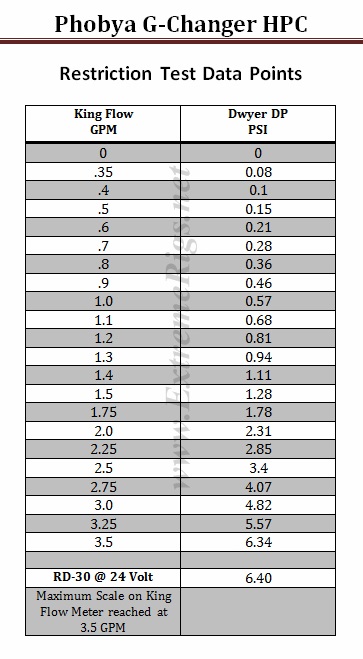 The table numbers indicate that the HPC is a fairly high restriction radiator. However numbers in isolation can only tell half the story. By plotting against other components it more easily shows the whole story. I have decided to use a HeatKiller 3.0 CPU block as the reference in these plots for two reasons. Firstly there is no chance of the plot being cluttered by curves overlapping and secondly it gives a reference point against a fairly common loop component of average restriction.
The table numbers indicate that the HPC is a fairly high restriction radiator. However numbers in isolation can only tell half the story. By plotting against other components it more easily shows the whole story. I have decided to use a HeatKiller 3.0 CPU block as the reference in these plots for two reasons. Firstly there is no chance of the plot being cluttered by curves overlapping and secondly it gives a reference point against a fairly common loop component of average restriction.
As with all the radiator restriction plots I have limited the maximum flow rate displayed to 2.0 GPM as I suspect there are very few systems that operate above 2.0 GPM. For more information on how to read a restriction plot check out our guide.
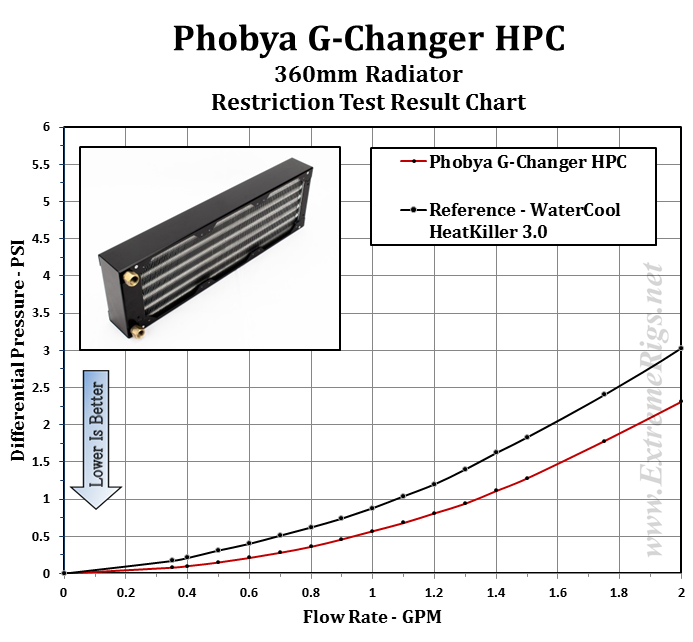 This plot confirms the HPC as a high restriction radiator. It seems that all the 90° turns over-ride the generous tubing size and triple parallel flow of the core.
This plot confirms the HPC as a high restriction radiator. It seems that all the 90° turns over-ride the generous tubing size and triple parallel flow of the core.
The next three plots show the HPC’s restriction level relative to other radiators in the test group. In the past I have only shown the 1.0 gpm comparison results, but have now decided that it may be better to show 3 flow rates; low, medium and high so readers can see the differences at varied flow rates.
Onwards to Thermal Performance!







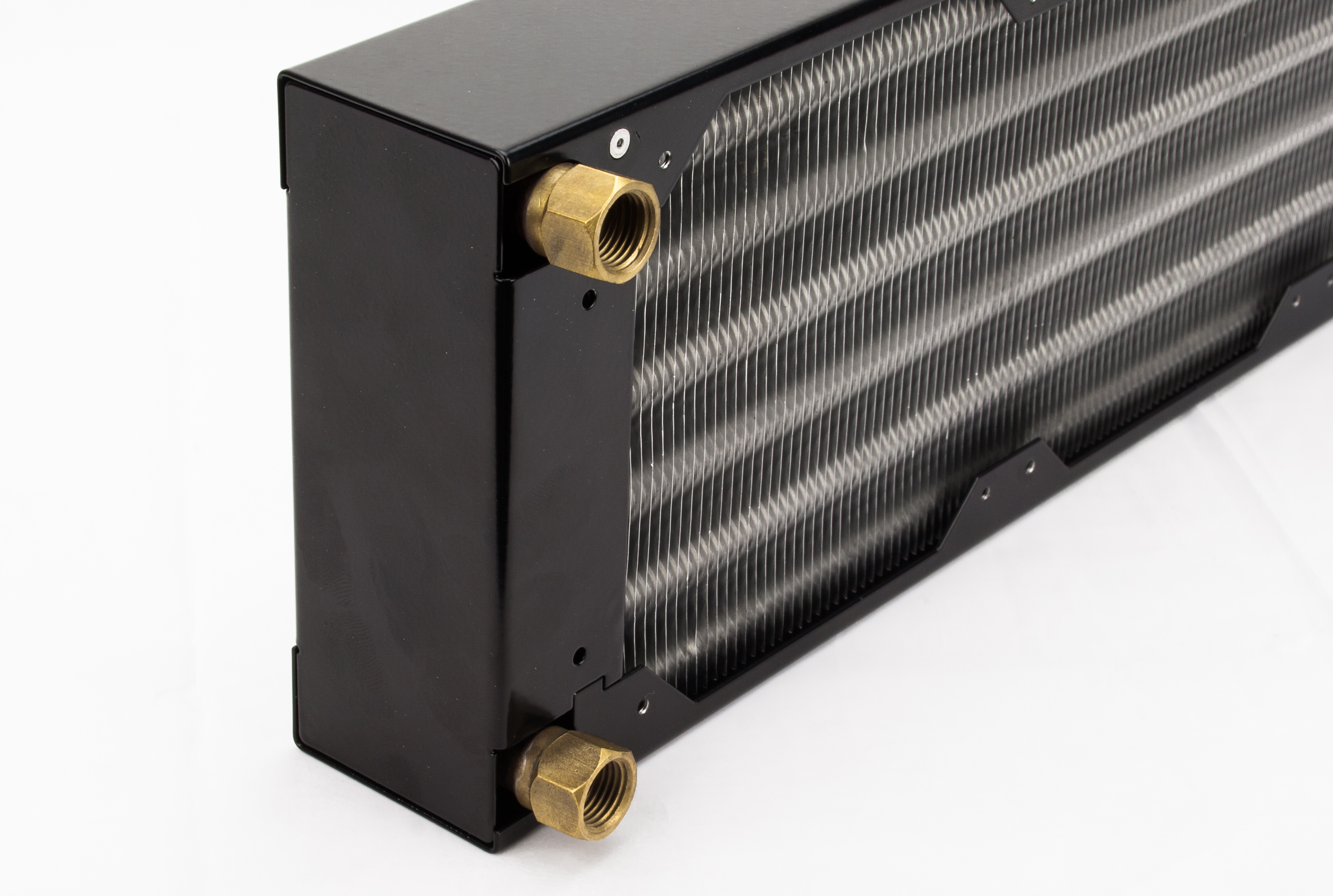
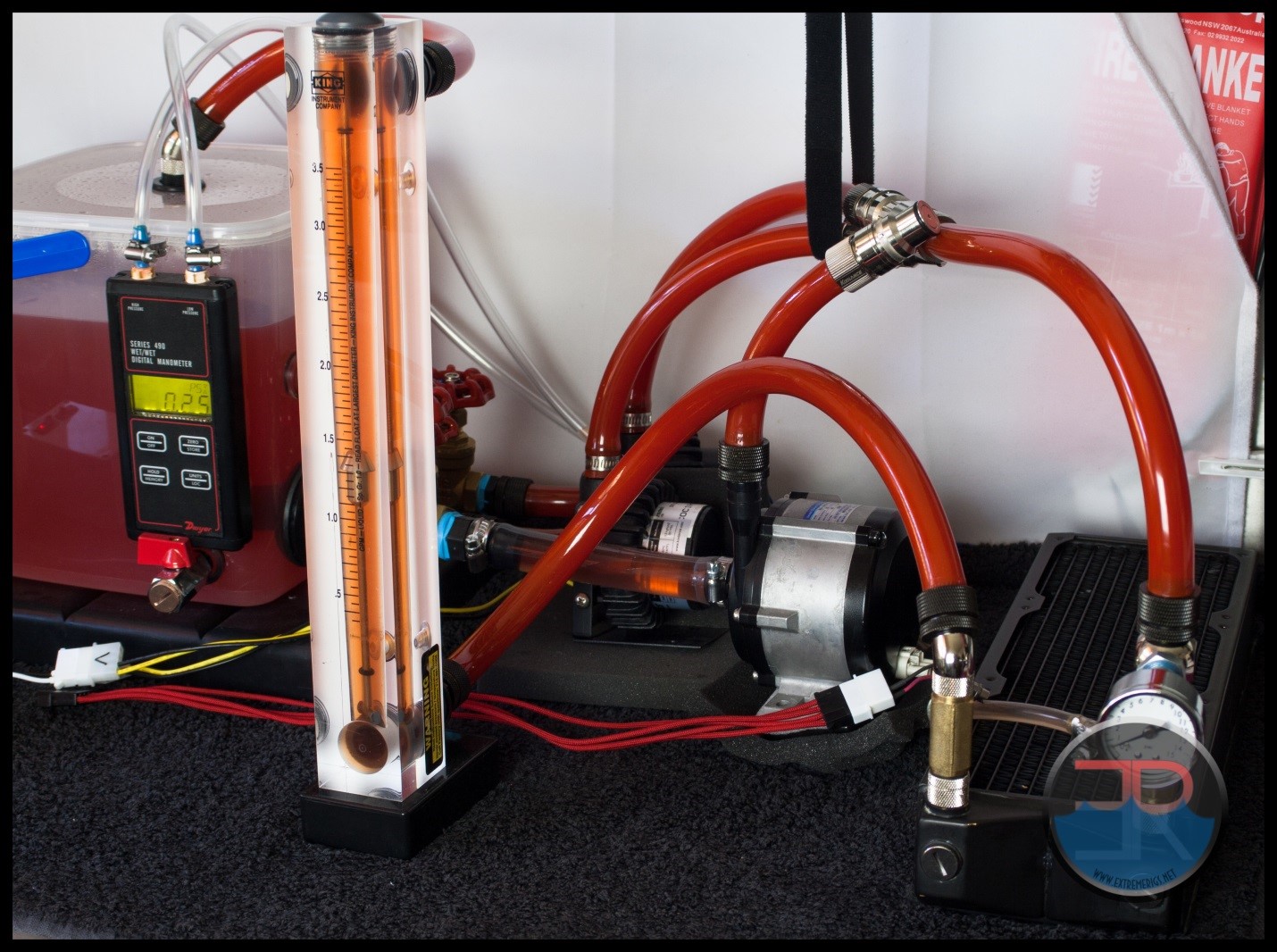
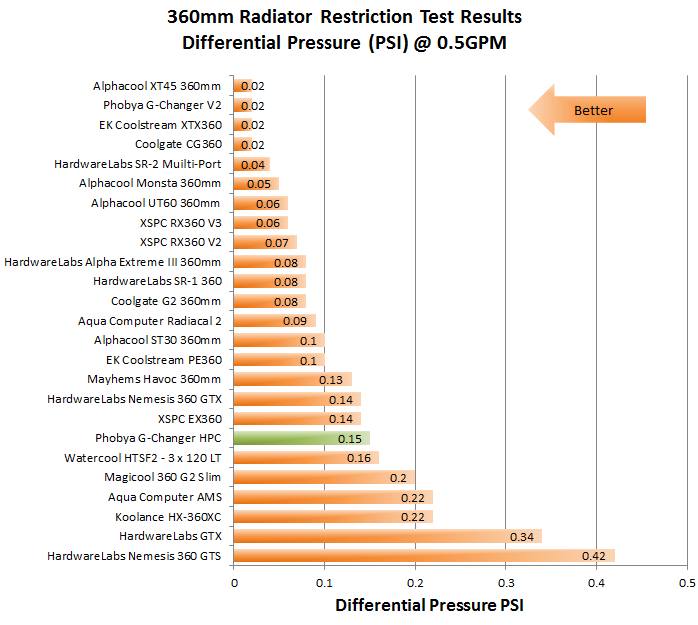
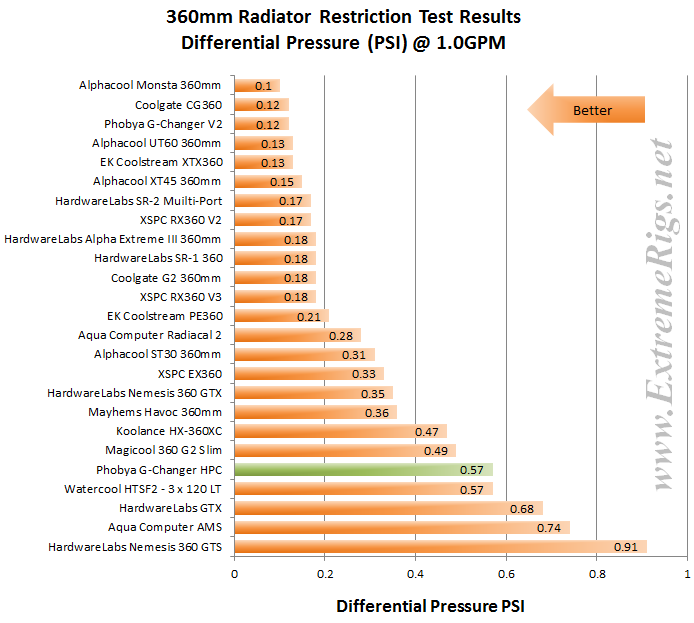
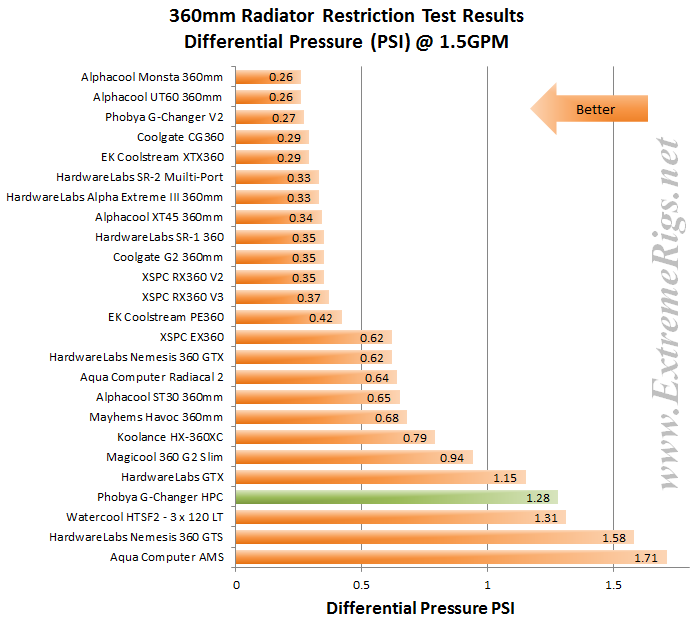




[…] Koolance HX-360XC 360 Radiator Magicool G2 Slim 360 Radiator Mayhem’s Havoc 360 Radiator Phobya G-Changer HPC 360 Radiator Phobya G-Changer V2 Full Copper 360 Radiator Watercool HTSF2 3×120 LT 360 Radiator XSPC EX 360 […]
Comments are closed.